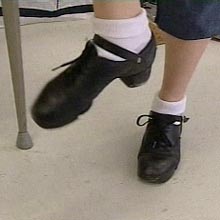nalco group
bone, muscle & joint pain physio
BOOK NOW / WHATSAPP ABOUT YOUR PAIN OR INJURY
- ORCHARD 400 Orchard Road #12-12 Singapore 238875
- TAMPINES 9 Tampines Grande #01-20 Singapore 528735
- SERANGOON 265 Serangoon Central Drive #04-269 Singapore 550265
Home > Blog > Physiotherapy > Conditions > Knee Pain > Repetitive Strain Injuries > Musician Physiotherapy > Irish Dancing Injuries
Irish Dancing Injuries
Implications for physiotherapy and regular deep tissue release massage therapy

The most commonly seen and treated Irish Dancing Injuries are listed below in the but as dancing is very dynamic, there are many associated injuries that do occur as well.
Most of these injuries are easily treatable with focus on the specific dance techniques, flexibility and strength needed for injury free dancing.
What Are The Symptoms of Irish Dancing Injuries?

Refers to a painful injury that happens when the tissue supporting the arch of the foot is is overused from repetitive or resisted motions, and ends up with inflammation and lots of pain.
Dancers will usually feel most of the pain on the inside of the heel and along the length of the arch.
Physiotherapy always almost include appropriate
- stretching
- applying cold therapy
- ultrasound therapy to accelerate soft tissue healing
- anti-inflammatory
medicine as well as
- gentle deep tissue release

Refers to a small deformation of the bone around the area of the big toe. For people who dance professionally or for fun, it’s often caused by wearing dance shoes that don’t fit well.
What you need to do to avoid this is to make sure that your shoes fit properly or have an orthotic device fitted.
In extreme cases, if the problem is persistent and painful, sometimes a referral to a orthopaedic surgeon or foot and ankle surgeon may be beneficial.
Although surgery is only way to fully
correct bunions, there are a number of things that physiotherapists can do to
help (click on the "bunion" link above)

Refers to a rather painful yet common dance injury. It is caused by mild tears of the connective tissue of the muscles in the shin region to the tibial (shin) bone.
In dancing, these tears are caused by overworking the shin bone and overwork the lower limbs by landing jumps on hard surfaces, landing improperly and inflexibility.
Dancers need to extra careful when performing jumps that when they land, they need to do it as safely and properly as possible to avoid putting stress on the shins (it’s the exertion that causes shin splints).
If you’re a dancer and already suffering from this you can consider wearing compression bandage to provide extra support to the area, reduce strain and accelerate healing.
Appropriate physiotherapy management including
- stretching
- ultrasound therapy and regular deep tissue and sports massage can help to relieve of pain of shin splints and accelerate healing

Achilles Tendonitis – Our Achilles tendon is a very strong tendon and provides a lot of strength and stability for Irish Dancing, that’s why it’s important that dancers protect and care for their Achilles tendons.
Achilles tendonitis is another common Irish Dancing Injury, causing the tendon to become irritated, inflamed and very painful.
Common causes includes
- ill fitting dancing shoes
- laces that had been tied too tightly
- over-dancing (yes, there is such thing) and
- not resting enough (yeah this too, the Irish's energy is amazing!)
If you
suffer from this painful injury, regular physiotherapy with our senior physiotherapists such as
- cold therapy
- heat therapy
- moist heat paraffin wax therapy
- radio-frequency Indiba physiotherapy
- manual therapy
- joint mobilization
- ultrasound therapy
- stretching exercises
- strengthening exercises
- scar management
- etc
help reduce swelling
and relieve pain.
If you do have Irish dancing injuries, do drop us a text and call and we'll do our best to serve you (and keep you dancing longer and stronger! =D)
